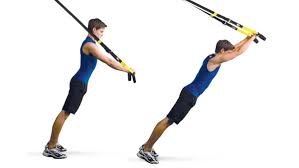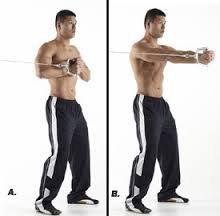Most people want to develop a six pack and so they do exercises like sit-ups or crunches, but I suggest to first learn how your core is constructed before investing too much time on exercises. After all, a six pack is, physically, a very attractive aspect.

I received all my information from Build by Science by Mike Robertson, C.S.C.S. I shortened and simplified it.
Muscular Anatomy
There are three muscle groups that participate in core exercises.
Deep Layer - This, also, is split up in three groups
1.1. Diaphragm. It start at the front of the rib cage goes around the back to the lower back. It is necessary for respiration.
1.2. Pelvic floor. It is located at you pelvis. It helps with pressurizing and stabilizing your spine.
1.3. Transverse Abdominus. It starts at the middle of your six-pack(or soon to be) and runs around to you lower back. This stabilizes you pelvis.Intermediate layer - He basically only consist of one muscle group
2.1. Internal oblique. This muscle runs from middle of six pack to your hip bone. It helps with torso rotation (or anti-rotation) and respiration.Superficial layer - The third and last muscle group consists of External oblique and Rectus Abdominus.
3.1 External oblique. It runs from your rib cage to your hip bone. This is a very important muscle and helps a ton, mostly for stability through the core and midsection.
3.2 Rectus Abdominus. It starts at the lower part of the pelvis and end in the fifth, sixth or seventh rib. This is your six-pack itself.
Bones that are part of core movements
- With the Pelvis you do two movements. Anterior tilt is the movement you would do from a good posture to a slouch when you are sitting
Posterior tilt is just the opposite - Lumber spine. This is the part of the spine between the pelvis and the rib cage. When you bending forward, backward, sideways or rotating you use your Lumber spine, so you need to protect it well. I'll give a few exercises to keep the muscles around it strong.
Mike Robertson also says that your core can do much more than just flexing. Here are some movement you tend to use unconsciously.
- Create Pressure.
When taking a deep breath you create pressure. That pressure gives a strong and stable spine. - Controlling extension.
Your six-pack is not only for good looks, but for bending forwards or backwards. - Side bending.
It's like carrying a shopping bag in one hand on one side. You need to stay strong so your spine can stay neutral - Anti-rotation.
Almost all muscles in your core helps with this, but it is basically to prevent your body from rotating when any push/pull actions work onto your body. - Resist flexion.
If you do a dead-lift you do not want to bend over otherwise you will end up hurting yourself. Make sure your core is strong so you do not fall over, but your back stays straight.
Excises:
- TRX Fallout

- Pall of Press

- Leg lift
- Suitcase Dead lift
Now you know almost everything there is to know about the anatomy of your abs.
Good luck ;)
Great post, thanks for sharing :)
Downvoting a post can decrease pending rewards and make it less visible. Common reasons:
Submit